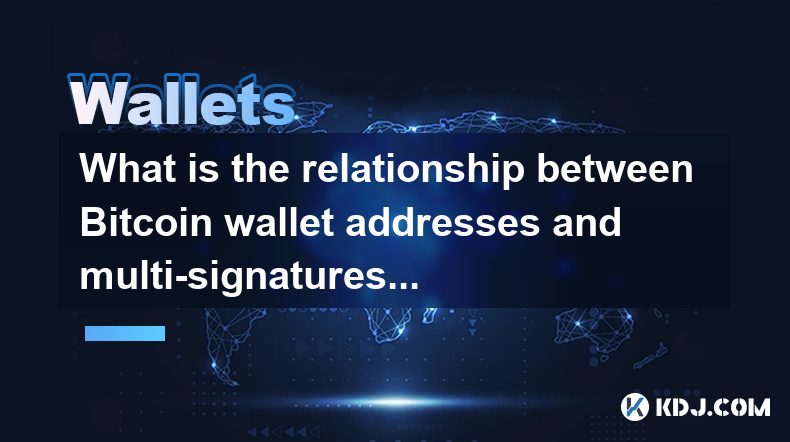-
 Bitcoin
Bitcoin $80,522.2571
-5.43% -
 Ethereum
Ethereum $2,145.1750
-7.94% -
 Tether USDt
Tether USDt $0.9992
0.04% -
 XRP
XRP $2.0242
-8.00% -
 BNB
BNB $573.7433
-6.36% -
 Solana
Solana $127.5658
-7.85% -
 USDC
USDC $1.0001
0.02% -
 Dogecoin
Dogecoin $0.1900
-7.74% -
 Cardano
Cardano $0.6019
-8.34% -
 TRON
TRON $0.2186
-3.79% -
 Litecoin
Litecoin $122.6207
-1.14% -
 Chainlink
Chainlink $13.8668
-9.25% -
 Avalanche
Avalanche $20.6024
-7.58% -
 UNUS SED LEO
UNUS SED LEO $9.2103
1.68% -
 Stellar
Stellar $0.2629
-8.72% -
 Toncoin
Toncoin $3.1929
-8.56% -
 Sui
Sui $2.5607
-11.36% -
 Shiba Inu
Shiba Inu $0.0...01339
-7.13% -
 Hedera
Hedera $0.1872
-5.82% -
 Polkadot
Polkadot $4.6041
-4.79% -
 MANTRA
MANTRA $7.2315
-0.31% -
 Hyperliquid
Hyperliquid $18.8515
-6.57% -
 Ethena USDe
Ethena USDe $0.9991
0.02% -
 Bitcoin Cash
Bitcoin Cash $278.2570
-5.78% -
 Dai
Dai $0.9998
-0.01% -
 Bitget Token
Bitget Token $3.8777
-1.64% -
 Uniswap
Uniswap $7.3083
-8.84% -
 Monero
Monero $210.9496
-2.14% -
 Aptos
Aptos $5.7785
-4.98% -
 NEAR Protocol
NEAR Protocol $2.8447
-7.22%
What is the relationship between Bitcoin wallet addresses and multi-signatures?
Bitcoin wallet addresses, acting as public keys, are essential for multi-signature transactions, but don't directly participate in the signing process; multiple private keys are needed to authorize transactions, enhancing security.
Feb 28, 2025 at 03:24 am

What is the Relationship Between Bitcoin Wallet Addresses and Multi-Signatures?
Key Points:
- Bitcoin wallet addresses are essentially public keys, used to receive Bitcoin. They don't directly interact with multi-signature functionality, but are crucial for its implementation.
- Multi-signature (multisig) transactions require multiple private keys to authorize a transaction, enhancing security. The addresses involved in a multisig transaction are derived from the participating public keys.
- The complexity of setting up and managing multisig wallets varies depending on the implementation (e.g., hardware wallets, software wallets, custodial services).
- Different types of multisig configurations (e.g., 2-of-3, 3-of-5) offer varying levels of security and control.
- Security benefits of multisig include protection against theft, loss of private keys, and unauthorized access.
- Understanding the technical aspects of multisig requires knowledge of public key cryptography and digital signatures.
- Bitcoin Wallet Addresses: The Foundation of Bitcoin Transactions
A Bitcoin wallet address is essentially a public key hash. Think of it like your bank account number. It's a string of alphanumeric characters that uniquely identifies a specific destination for Bitcoin transactions. When you send Bitcoin to someone, you're sending it to their Bitcoin wallet address. This address doesn't directly reveal the underlying private key (which is analogous to your bank PIN or password) necessary to spend the Bitcoin. The address is generated from the public key using cryptographic hashing algorithms, making it computationally infeasible to derive the private key from the address alone. This is crucial for the security of the Bitcoin network. The address itself is not directly involved in the multi-signature process; rather, it's the public keys associated with the addresses that are used to create the multi-signature transaction. The relationship lies in the fact that the addresses are the endpoints for the transactions authorized by the multi-signature scheme. Each participating party in a multi-signature transaction contributes a public key which, in turn, is associated with a specific Bitcoin address. These addresses are where the Bitcoin is held and where the Bitcoin will be sent from after a successful multi-signature transaction. The transaction itself specifies which addresses will receive the Bitcoin and how many signatures are required to authorize the transaction. Therefore, the Bitcoin wallet addresses function as the visible identifiers for the funds managed under a multi-signature arrangement. They are the labels that help track and identify the Bitcoin that is subject to the multi-signature rules. Understanding how Bitcoin addresses are generated and their relationship to public and private keys is fundamental to understanding how multi-signature transactions function. Without this foundational understanding, the complexities of multi-signature transactions remain opaque.
- Multi-Signature Transactions: Enhancing Security Through Shared Control
Multi-signature (multisig) transactions introduce a crucial layer of security to Bitcoin transactions. Unlike standard transactions that require only one private key to authorize the spending of funds, multisig transactions require multiple private keys to authorize the same action. This means that several individuals or entities must cooperate to approve a transaction before it can be broadcast to the Bitcoin network and added to the blockchain. The number of required signatures and the total number of available keys define the multisig configuration. For example, a 2-of-3 multisig setup requires two out of three private keys to authorize a transaction, while a 3-of-5 multisig setup requires three out of five private keys. This collaborative authorization mechanism significantly reduces the risk of theft or loss of funds. If one private key is compromised, the remaining signers can prevent unauthorized spending. The process typically involves each participant signing a partial transaction, which is then combined to form a complete, valid transaction. The addresses used in a multisig transaction are derived from the public keys contributed by each participant. Therefore, a multisig wallet will typically have multiple addresses associated with it, each representing a portion of the overall control over the funds. The selection of a particular multisig configuration depends on the desired balance between security and convenience. A higher threshold (e.g., 3-of-5) offers greater security but requires more coordination among participants. A lower threshold (e.g., 2-of-3) is more convenient but offers less protection against compromised keys. The complexity of setting up and managing a multisig wallet varies significantly depending on the method used (e.g., using a specialized multisig wallet service, setting it up on a hardware wallet, or employing a custom software solution). The technical aspects require a good understanding of cryptographic concepts and potentially involve complex cryptographic operations.
- Implementing Multi-Signature Wallets: A Range of Options
The implementation of multi-signature wallets varies greatly, offering a spectrum of options tailored to different security needs and technical expertise. The simplest approach involves using a multisig wallet service provided by a cryptocurrency exchange or a dedicated custodial service. These services handle the technical complexities of managing the private keys and generating multisig transactions. However, this approach introduces a degree of trust in the third-party provider, potentially compromising security if the provider is compromised. A more secure option involves using a hardware wallet that supports multisig functionality. Hardware wallets offer a high level of security by storing the private keys offline, protected from malware and other online threats. Many hardware wallets allow users to create and manage multisig wallets with ease, providing a user-friendly interface for signing transactions. However, this option requires a thorough understanding of the hardware wallet's functionality and the multisig setup process. For users with advanced technical skills, creating a custom multisig wallet using software wallets or coding libraries is possible. This approach offers maximum control and flexibility, but it also requires significant technical expertise and carries a higher risk of errors. Each option presents a trade-off between security, ease of use, and control. The choice of implementation depends heavily on the specific needs and technical proficiency of the users involved. The level of security is also directly correlated with the chosen implementation. Using a reputable hardware wallet with a robust multisig setup is generally considered the most secure option, while relying on a third-party custodial service carries more risk.
- Security Advantages and Considerations of Multi-Signature Setups
Multi-signature wallets offer several significant advantages in terms of security. One of the most important is the protection against the loss or theft of a single private key. In a multisig setup, the loss of one private key does not necessarily compromise the entire wallet. As long as enough remaining keys are available to meet the threshold, the funds remain accessible. This significantly reduces the risk associated with single points of failure, a common vulnerability in standard single-signature wallets. Furthermore, multisig configurations can protect against unauthorized access, even if a private key is compromised. If an attacker gains access to one private key, they still need to obtain additional keys to authorize any transactions. This layered security significantly increases the difficulty for attackers to steal funds. However, the security of a multisig wallet is not absolute. The strength of the multisig setup depends heavily on the security of each individual private key. If all private keys are compromised, the funds are vulnerable, regardless of the multisig configuration. Therefore, it is crucial to secure each private key using best practices, such as strong passwords, offline storage, and regular security audits. The choice of multisig configuration also affects the security level. Higher thresholds (e.g., 3-of-5) offer better security but may be less convenient. Choosing the appropriate configuration requires a careful consideration of the security needs and the practical aspects of managing multiple keys.
- Technical Aspects of Multi-Signature Implementation: Public Key Cryptography
Understanding the technical aspects of multi-signature implementations requires a grasp of public key cryptography and digital signatures. Each participant in a multisig setup possesses a pair of keys: a private key and a corresponding public key. The private key is kept secret and is used to sign transactions. The public key is publicly shared and is used to verify signatures. When creating a multisig transaction, each participant uses their private key to sign a portion of the transaction. These partial signatures are then combined using cryptographic algorithms to create a complete signature that satisfies the multisig threshold. This complete signature is then attached to the transaction and broadcast to the Bitcoin network. The Bitcoin network verifies the signature using the public keys associated with the multisig setup. If the signature is valid and meets the required threshold, the transaction is added to the blockchain. The underlying cryptographic algorithms are complex and require a deep understanding of mathematics and computer science. However, the basic principle is that the combination of multiple signatures ensures that only authorized participants can spend the funds. The security of the multisig system relies heavily on the cryptographic strength of the algorithms used and the security of the private keys. Any weakness in the algorithms or compromise of the private keys can jeopardize the security of the funds.
FAQs:
Q: Can I use a multi-signature wallet with just one address?
A: No. A multi-signature wallet requires multiple addresses, each associated with a participant's public key. These addresses represent the various portions of the control over the funds. The addresses themselves are not directly involved in the signing process, but they serve as the destinations for incoming and outgoing funds. The multi-signature aspect is handled through the private keys associated with these addresses.
Q: What happens if I lose one of my private keys in a 2-of-3 multisig setup?
A: In a 2-of-3 multisig setup, losing one private key means you can no longer authorize transactions independently. You'll need to collaborate with the other participants who hold the remaining private keys to authorize transactions. However, as long as you haven't lost all private keys, your funds remain secure.
Q: Is a multi-signature wallet always more secure than a single-signature wallet?
A: While multi-signature wallets offer enhanced security against loss or theft of a single private key, their security is dependent on the secure management of all participating private keys. If all keys are compromised, the multisig setup provides no additional protection. Proper security practices for each key are paramount, regardless of the wallet type.
Q: How do I choose the right multi-signature configuration (e.g., 2-of-3, 3-of-5)?
A: The choice of configuration depends on the balance you seek between security and convenience. A higher threshold (e.g., 3-of-5) offers greater security but requires more coordination to authorize transactions. A lower threshold (e.g., 2-of-3) is more convenient but offers less protection against compromised keys. Consider the number of participants, the level of trust among them, and the potential risks involved.
Q: Can I use multi-signature for other cryptocurrencies besides Bitcoin?
A: Yes, many cryptocurrencies support multi-signature transactions. The specific implementation details may vary depending on the cryptocurrency, but the fundamental concept of requiring multiple signatures for authorization remains the same. However, always verify the specific multisig support offered by the cryptocurrency in question.
Q: What are the potential downsides of using a multi-signature wallet?
A: The main downsides are increased complexity in setting up and managing the wallet, the need for coordination among multiple participants to authorize transactions, and the potential for delays if one participant is unavailable or unresponsive. Furthermore, the security of a multisig wallet ultimately relies on the secure handling of all involved private keys; a breach of all keys compromises the funds regardless of the multisig configuration.
Disclaimer:info@kdj.com
The information provided is not trading advice. kdj.com does not assume any responsibility for any investments made based on the information provided in this article. Cryptocurrencies are highly volatile and it is highly recommended that you invest with caution after thorough research!
If you believe that the content used on this website infringes your copyright, please contact us immediately (info@kdj.com) and we will delete it promptly.
- 95% of Dogecoin (DOGE) Network Activity Has Disappeared, Suggesting Considerable Decline in Activity
- 2025-02-28 10:55:33
- LINK price is expected to rise by 12.38% in the next 5 days according to our Chainlink price prediction
- 2025-02-28 10:51:39
- ONDO Price Struggles at Key Demand Zone: Will Bulls Step In or Will Support Fail?
- 2025-02-28 10:51:39
- Bitcoin (BTC) Dips 20% From ATH But Long-Term Bullish View Remains Intact
- 2025-02-28 10:51:39
- By William M. Peaster, Bankless
- 2025-02-28 10:50:32
- XRP Price Drops, Splitting Analysts into Bear and Bull Camps
- 2025-02-28 10:50:32
Related knowledge

Does a cryptocurrency wallet need a backup? How to backup?
Feb 28,2025 at 12:07pm
Why does cryptocurrency wallet need backupA cryptocurrency wallet stores your digital assets. Once the device is damaged, lost, or encountered software failure or hacker attacks, the wallet data may be lost. Without backup, the assets will not be retrieved. Backup is like "insurance" of assets and is a key measure to ensure the security of cry...

Which is better, a multi-chain wallet or a single-chain wallet?
Feb 28,2025 at 12:04pm
Features of single-chain walletSingle-chain wallet, as the name implies, only supports a single blockchain. For example, Bitcoin wallet and Ethereum wallet focus on the storage and management of their respective blockchain assets. This specificity brings many advantages.For example, it can provide in-depth functional optimization for specific blockchain...

What are cold and hot wallets and what is the difference between them?
Feb 28,2025 at 12:00pm
Cold wallet: a security bastion for offline storageCold wallets, often called "offline wallets", are wallets that store cryptocurrencies in offline devices. It is like a safe in the mountains, isolating the private key from the network, greatly reducing the risk of being attacked by the network.Cold wallet carriers are diverse, and computers, ...

What are the fees for using a cryptocurrency wallet?
Feb 28,2025 at 11:58am
There are many types of cryptocurrency wallets, and the fees involved in using them are also relatively complex. The following is a detailed introduction to the various fees you may need to pay when using a cryptocurrency wallet.Transaction fees : This is the most common fee and is usually incurred when conducting cryptocurrency transfer transactions. I...

What to do if your cryptocurrency wallet is lost or stolen?
Feb 28,2025 at 11:52am
Confirm lost or stolenCalm down first and think carefully about whether it is really lost or stolen. Check the device for any abnormal operation records. Check whether the wallet login is normal and do not make mistakes due to misoperation. After confirming, take the next action to avoid making mistakes in panic.Find wallet backupIf there is a backup be...

How to transfer cryptocurrency from one wallet to another?
Feb 28,2025 at 11:48am
Confirm wallet compatibilityDifferent cryptocurrencies are adapted to different wallets. Before transfer, be sure to confirm that both the source wallet and the target wallet support this cryptocurrency. For example, Bitcoin commonly used Bitmask wallets, Ethereum is adapted to MetaMask wallets, confirming compatibility can avoid many subsequent problem...

Does a cryptocurrency wallet need a backup? How to backup?
Feb 28,2025 at 12:07pm
Why does cryptocurrency wallet need backupA cryptocurrency wallet stores your digital assets. Once the device is damaged, lost, or encountered software failure or hacker attacks, the wallet data may be lost. Without backup, the assets will not be retrieved. Backup is like "insurance" of assets and is a key measure to ensure the security of cry...

Which is better, a multi-chain wallet or a single-chain wallet?
Feb 28,2025 at 12:04pm
Features of single-chain walletSingle-chain wallet, as the name implies, only supports a single blockchain. For example, Bitcoin wallet and Ethereum wallet focus on the storage and management of their respective blockchain assets. This specificity brings many advantages.For example, it can provide in-depth functional optimization for specific blockchain...

What are cold and hot wallets and what is the difference between them?
Feb 28,2025 at 12:00pm
Cold wallet: a security bastion for offline storageCold wallets, often called "offline wallets", are wallets that store cryptocurrencies in offline devices. It is like a safe in the mountains, isolating the private key from the network, greatly reducing the risk of being attacked by the network.Cold wallet carriers are diverse, and computers, ...

What are the fees for using a cryptocurrency wallet?
Feb 28,2025 at 11:58am
There are many types of cryptocurrency wallets, and the fees involved in using them are also relatively complex. The following is a detailed introduction to the various fees you may need to pay when using a cryptocurrency wallet.Transaction fees : This is the most common fee and is usually incurred when conducting cryptocurrency transfer transactions. I...

What to do if your cryptocurrency wallet is lost or stolen?
Feb 28,2025 at 11:52am
Confirm lost or stolenCalm down first and think carefully about whether it is really lost or stolen. Check the device for any abnormal operation records. Check whether the wallet login is normal and do not make mistakes due to misoperation. After confirming, take the next action to avoid making mistakes in panic.Find wallet backupIf there is a backup be...

How to transfer cryptocurrency from one wallet to another?
Feb 28,2025 at 11:48am
Confirm wallet compatibilityDifferent cryptocurrencies are adapted to different wallets. Before transfer, be sure to confirm that both the source wallet and the target wallet support this cryptocurrency. For example, Bitcoin commonly used Bitmask wallets, Ethereum is adapted to MetaMask wallets, confirming compatibility can avoid many subsequent problem...
See all articles

















































































